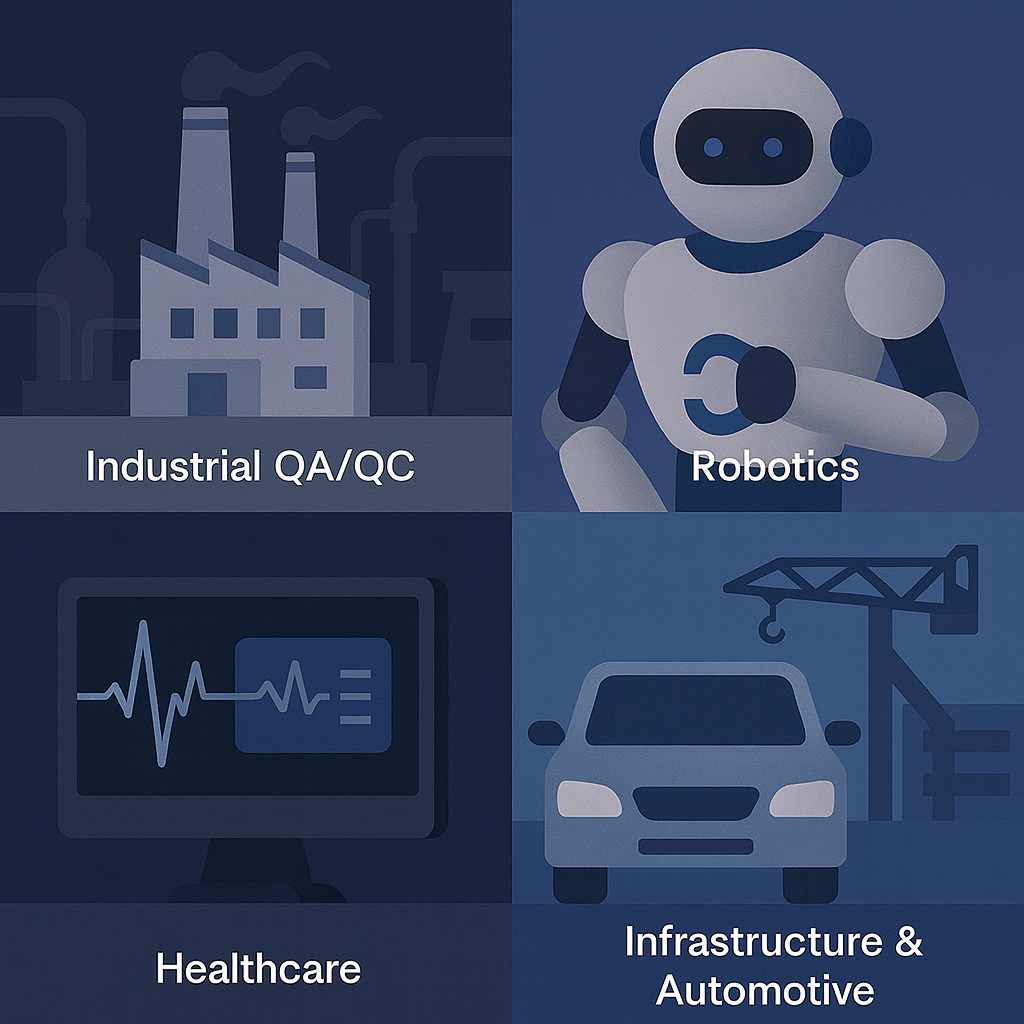Structural perception for real-world inspection
Detects and explains structural deviations — with automatic reference learning and one-sample adaptability.
Why Conventional Vision Struggles
Conventional computer vision depends on large labeled datasets, retraining cycles, and opaque outputs.
It performs well — until real conditions drift.
❌ Thousands of labeled images — impractical for rare or evolving defects.
💸 High compute and long turnaround for retraining.
❌ Opaque saliency maps — show that something changed, but not why or where.
⚠️ Sensitive to lighting, angle, and environmental variation.
🔒 Hard to audit — limited explainability for regulators and QA.
From Black Boxes to Phase Fields
Morpho complements them by extracting structural coherence — a phase-based representation that remains stable under noise, illumination, and minor geometric drift.
It focuses on form and physical consistency rather than purely visual correlations.
🌀 Each frame or signal is decomposed into φ (phase) and κ (coherence) fields — revealing structure that conventional models miss.
🌱 Local morphogenetic dynamics stabilize these fields, revealing deviations as phase drifts, not random pixel noise.
🧩 In many industrial cases (e.g., rigid mechanical parts, PCBs), Morpho achieves operational detection from 1–5 reference samples.

What You See: Real Structural Deviation
Morpho highlights structural deviations directly in the image — no abstract heatmaps, no raw probabilities.
Below: a PCB inspection case.
Visual case: missing quartz resonator on PCB
🟥 Red overlay = phase mismatch area
🟨 Frame = component zone with missing quartz resonator
In production, you receive:
- Visual overlay of deviation zones (phase drift / coherence drop)
- Quantitative metrics with precise localization
Instead of “defect probability = 0.92,”
you get: “phase deviation +23% in component zone QZ2 — structural absence detected.”
Built on Structural Principles
One/few-shot capability
robust detection from 1–5 reference templates.
Phase-based visual explainability
anomaly overlays derived from φ/κ deviations, not saliency tricks.
Stability through local phase coupling
stable under noise, lighting changes, geometric variability.
Works with images, signals, sensor grids
applicable to images, signals (ECG, vibration), and sensor fields.
Lightweight architecture for edge
lightweight edge preprocessing + morphogenetic core for cloud/cluster deployment.
Where It Works Best
Morpho is built for domains where defects are rare, labeling is costly, and explanations are mandatory:
- Industrial QA/QC: automated visual inspection with overlay maps, minimal templates.
- Robotics: anomaly-aware vision modules that explain failures in real time.
- Healthcare: medical imaging (MRI, CT) and biosignal analysis (ECG) with explainable overlays.
- Infrastructure & Automotive: structural monitoring, ADAS anomaly detection, fault localization.
…and beyond → logistics, energy, critical infrastructure, security

Morpho generalizes perception — from pixels to phase, from classification to structure.
The Morpho Pipeline
morpho takes an image, frame, or signal
↓
Phase transform
data is turned into structural phase maps
↓
Morphogenetic stabilization
local coupling rules smooth noise and reveal coherent motifs
↓
Memory comparison
current motifs are compared to stored reference fields
↓
Output
deviation maps and overlay explanations are produced in real time
Instead of a probability score, Morpho produces a structural deviation map you can see and audit.
Bring explainable perception with Morpho
From industry to medicine, robotics to infrastructure — Morpho turns raw phase data into transparent, verifiable understanding.

